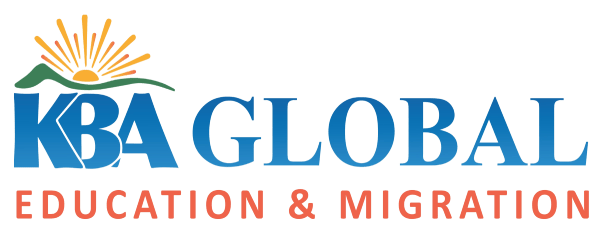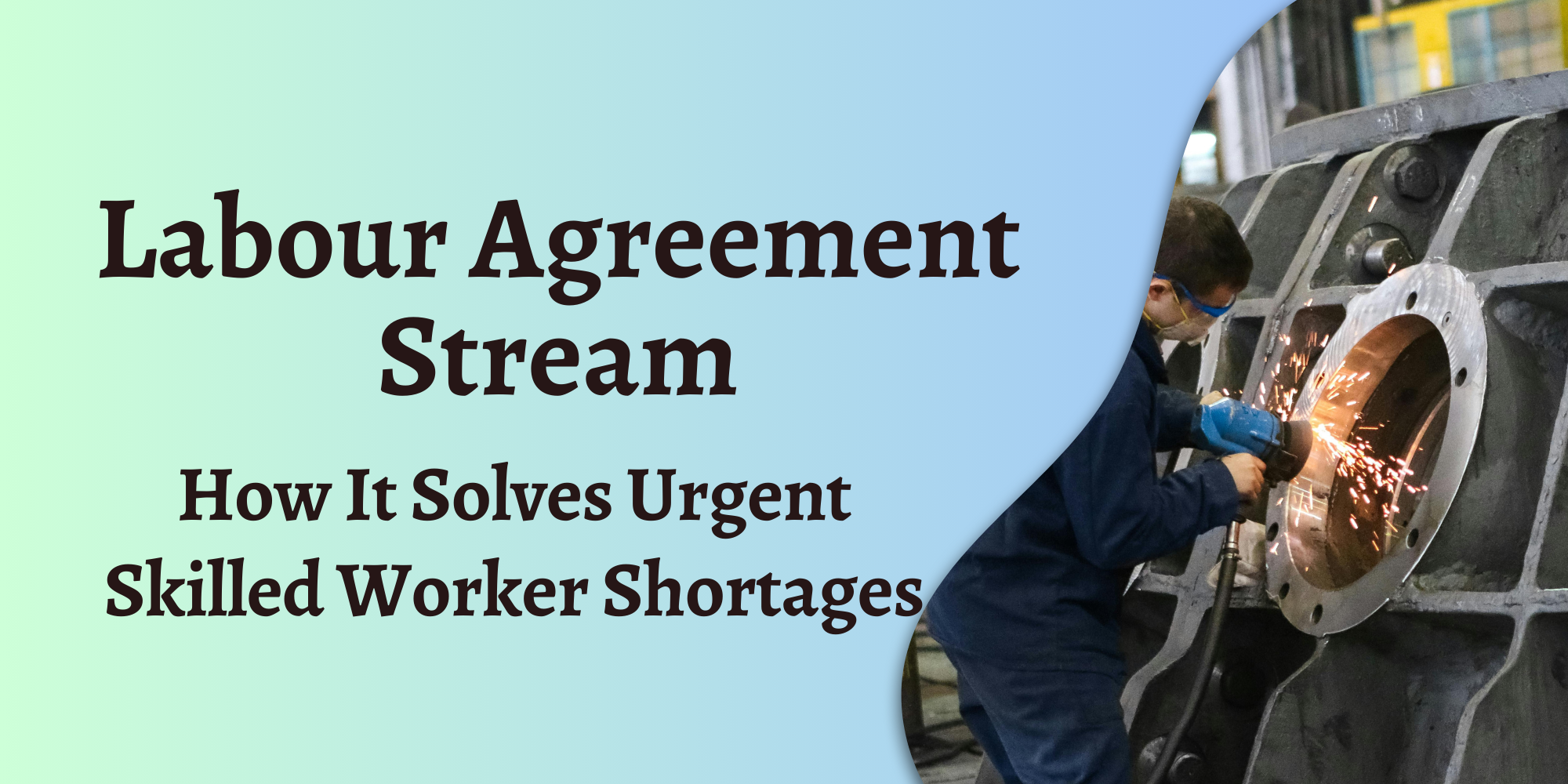At times, employers struggle to find local skilled workers, whether due to highly specialised roles or a general shortage. Under the Labour Agreement Stream, you can request a labour agreement to hire overseas workers and address these shortages more easily.
In this blog, learn about the different types of agreements, visa options available, and steps to apply for a labour agreement.
What is a labour agreement?
A labour agreement is a formal arrangement between the Australian government and employers or industry groups. It permits Australian employers to hire skilled workers from overseas, provided that circumstances meet these three conditions:
- There’s a genuine skills shortage for the position
- No suitable or qualified Australian is readily available
- Standard temporary or permanent skilled migration arrangements are not applicable
Labour Agreements are usually valid for five years and are negotiated based on the specific needs of the employer or industry.
What happens in a Labour Agreement?
When a Labour Agreement takes place, several specific aspects are addressed:
- Identifying skills shortages
Employers consult with government authorities to find out specific occupations where there is a skills shortage and where there’s a lack of suitably skilled Australian workers available to do the work.
- Demonstrating genuine efforts to recruit local workers
Employers prove that they’ve made recent, genuine efforts to first hire Australian citizens or permanent residents for these vacant positions. This shows that hiring overseas workers is a last resort and that the local workforce is given priority.
- Consulting with industry stakeholders
Employers consult relevant trade unions and peak industry bodies to ensure that the agreement reflects the needs and interests of all parties involved.
- Specifying requirements and the number of workers needed
The Labour Agreement specifies the number of overseas skilled workers the employer needs, as well as the age, skill and English language requirements needed to fill the identified vacancies.

How Labour Agreements Benefit Employers and Overseas Workers
Employers benefit in great part through concessions that allow them to address critical positions immediately.
These concessions typically include a lower English requirement and skill level compared to those required in standard skilled migration visas.
As a result, these vacancies become more attractive to skilled overseas workers. Benefits like the Labour Agreement Stream to PR pathway and priority visa processing entice overseas workers to come to Australia.
While labour agreements are beneficial, employers must understand that these arrangements require a meticulous and thorough process. This ensures there’s no overreliance on overseas workers and maintains the integrity of the local job market.
Types of Labour Agreement
There are five types of labour agreements tailored to different needs and situations.
Industry Labour Agreements
Industry Labour Agreements are designed for specific industries facing widespread skill shortages. Examples of industries with this arrangement include agriculture, meat processing, fishing, fast food and so on.
These ‘template’ arrangements are agreed among employers, industry representatives and the Australian Government.
Company-Specific Labour Agreements
Company-Specific Labour Agreements allow a single company to negotiate terms directly with the government to fill highly specialised roles critical to their operations.
However, this is granted on a case-by-case basis. Generally, the occupation in consideration should not already be included in an industry agreement. Additionally, there should be no existing DAMA or Project Agreements that already cover the occupation.
Designated Area Migration Agreements
Designated Area Migration Agreements (DAMAs) are intended for specific regions in Australia. Such agreements provide flexibility in that they consider both skilled and semi-skilled occupations to attract overseas workers to regional areas.
Local governments or regional bodies, in collaboration with the federal government, negotiate these agreements to create terms that suit their area’s needs.
Some existing DAMA agreements include NT DAMA and Goulburn Valley DAMA (in Victoria).
Project Agreements
Project Agreements are designed for large-scale infrastructure or resource projects (often Australian Government initiatives) requiring a significant number of skilled workers. These allow major projects to meet labour needs efficiently and avoid delays.
For example, projects endorsed by the Department of Foreign Affairs and Trade under the China-Australia Investment Facilitation Arrangement can request a Project Agreement.
Generally, project owners first negotiate these agreements, after which individual labour agreements are established with employers or subcontractors.
Global Talent Employer Sponsored (GTES) Agreements
Global Talent Employer Sponsored (GTES) Agreements allow businesses to employ overseas workers for highly-skilled niche positions, provided that:
- No local talent is available
- These occupations don’t apply with standard visa programs, particularly the short- and medium-term stream of the TSS visa
Employers can sponsor workers for a TSS visa under the labour agreement stream, specifically the GTES.
Labour Agreement Visa Options
Employers can sponsor overseas workers under the labour agreement stream of these 3 primary visa options.
- Temporary Skill Shortage (TSS) Visa (Subclass 482) – allows skilled workers to stay up to 4 years, with a pathway to PR via the ENS visa.
- Employer Nomination Scheme (ENS) Visa (Subclass 186) – allows skilled workers to live and work in Australia indefinitely as permanent residents
- Skilled Employer Sponsored Regional (Provisional) Visa (Subclass 494): allows skilled workers to stay up to 5 years, with a pathway to permanent residency (via the 191 visa) after 3 years
List of Current Labour Agreements
Below is a list of current labour agreements in Australia.
| Type | Labour agreements |
| Industry Labour Agreement | AdvertisingAged careDairyFishingHorticultureMeatMinister of ReligionOn-hirePorkRestaurant (premium dining) |
| DAMA | Adelaide City Technology and Innovation Advancement, SA: Skilled & Business MigrationEast Kimberley, WA: East Kimberley Chamber of Commerce and IndustryFar North Queensland, QLD: Cairns Chamber of Commerce, Goulburn Valley, VIC: Goulburn ValleyGreat South Coast, VIC: Warrnambool City CouncilNorthern Territory, NT: Northern Territory Designated Area Migration AgreementOrana, NSW: Regional Development Australia – Orana, NSWPilbara, WA: RDA PilbaraSouth Australia Regional, SA: Skilled & Business MigrationSouth West, WA: Shire of DardanupThe Goldfields, WA: City of Kalgoorlie BoulderTownsville, QLD: Townsville Enterprise Limited |
| Company-Specific Labour Agreement | 3 Metals PTY LTDA & D AUSTRALASIA PTY LTDCOSMO CRANES AND RIGGING PTY LTDGoogle Australia Pty Ltd |
| GTES | Established Business Stream: ACCIONA CONSTRUCTION AUSTRALIA PTY LTDAmazon Web Services Australia Pty LtdCanva Pty LtdPfizer Australia Pty Ltd Start Up Stream: Big Picture Medical Pty LtdSwitch Automation Pty LtdHarrison-AI Pty Ltd |
Note: As of writing, the current labour agreements specified are ongoing. However, the above is not an exhaustive list. Visit the Department of Home Affairs website for a full list of labour agreements.
Labour Agreement Occupation List
Eligible skilled occupations, as well as semi-skilled occupations, can vary depending on the type of labour agreement.
For example, under the Aged Care Labour Agreement, the ANZSCO occupations Nursing Support Worker, Personal Care Assistant and Aged or Disabled Carer are considered critical roles.
On the other hand, the Northern Territory DAMA has a more inclusive list of eligible occupations under the program.
A registered migration agent can provide you with advice and close guidance regarding any critical occupations your business needs to fill.
How to Apply Under the Labour Agreement Programme
Employers can follow these general steps to apply for Australia’s Labour Agreement programme:
1. Check your eligibility.
Ensure you meet the minimum requirements for the Labour Agreement. Generally, you must:
- Have been actively operating in Australia for at least the last 12 months
- Be financially capable of employing overseas workers
- Demonstrate that a genuine skills or labour shortage exists and that there’s no suitably skilled local worker available
- Have consulted with industry representatives, associations and unions for the labour agreement
2. Submit a Labour Agreement request
You can do this via Immiaccount. The system also outlines specific documents you must upload for the type of labour agreement you’re applying for.
Generally, after 3 to 6 months, the Department will have fully evaluated your Labour Agreement request. Once approved, you will receive a copy of the proposed Labour Agreement, which you must then sign and return before implementation.
3. Nominate an eligible overseas worker
You must submit a nomination for each overseas worker you wish to sponsor through ImmiAccount. As an employer, it is your responsibility to verify the applicant/s visa eligibility for the specific visa pathway.
4. Coordinate with the worker on their visa application
Once you’ve submitted a nomination, the worker(s) can lodge their TSS or SESR visa applications.
Professional Guidance for Your Labour Agreement Application
At KBA Global, we’ll look into the nuances of your circumstance, help assess your eligibility and even assist with negotiations and terms, ensuring you’re guided throughout the process.
You won’t need to worry about overlooking requirements. For over 10 years, we’ve sorted out similar paperwork in the past. It’s our mission to make the process as easy as possible for you.
Book a free consultation with one of our agents today!
Disclaimer: The above information is a general guide and not professional immigration advice. Be aware that immigration laws and regulations can change swiftly, potentially rendering some or all of the information outdated. Thus, before using the information above, we recommend checking the current laws through assistance from a migration agent or the Department of Home Affairs website.

